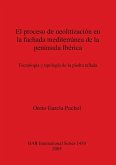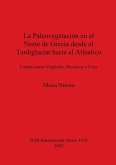By means of a paleoethnological, archaeological and autonomous historical analysis, based on regional records, this book presents a specific explanatory model of the origin and development of the city and the state in the Proto-history of the Northern Plateau of South-West Celtiberia, using as a case study the city of Termes, whose territory occupied a large part of this region in Celtiberic and Roman times, and analysing the subsequent integration process of this community as a civil territorial unit within the Roman Empire. Firstly, the pre-urban site is analysed; this is followed by an attempt to reconstruct the structural characteristics and evolution of the proto-urban and urban organisation of the site, up to the 2nd century AD. The text includes an analysis of the site's successive models of socio-political organisation, their patterns of continuity and disintegration, the interconnection between these, and the parameters defining this dynamic and changing urban structure. Se realiza un análisis paleoetnológico, arqueológico e histórico autónomo, fundamentado en el registro local para elaborar un modelo explicativo concreto sobre el origen y desarrollo de la ciudad y el Estado en la Protohistoria en la Meseta Norte desde el caso de la ciudad de Termes, y analizar el posterior proceso de integración de esta comunidad como unidad territorial y cívica dentro de una superestructura del Imperio Romano. Se analizan primero las premisas preurbanas, para a continuación tratar de reconstruir las características estructurales y evolución de la organización protourbana y urbana, hasta el s. II d.C. Abordamos el análisis de los sucesivos modelos de organización sociopolítica, sus pautas de continuidad y ruptura, la interconexión entre éstas, y los parámetros de definición de esa estructura urbana dinámica y cambiante.








